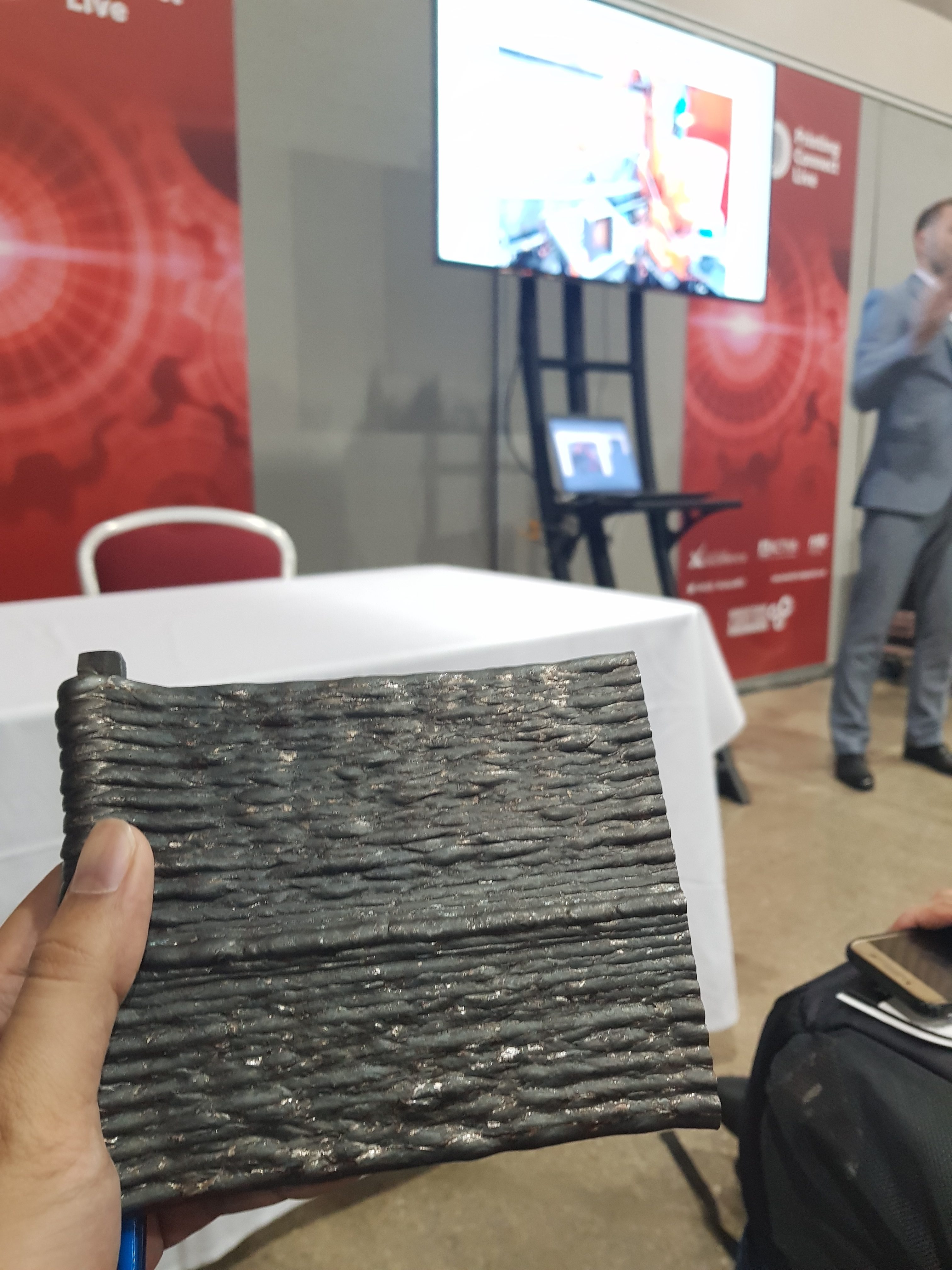3D Printing Industry recently visited the Manufacturing & Supply Chain Conference and Exhibition in Milton Keynes. Over fifty companies, institutions and organizations were present at the event, including IBM, robotics company Comau, the University of Buckingham and West Thames College. The crowd at the show was also diverse and constituted people from the manufacturing sector, researchers and students from Loughborough University and organizations like London Underground.
Among the 3D printing companies present at the show were British manufacturer Kora3D, Stratasys resellers, Laser Lines and Tri-Tech 3D, and GoPrint3D, a 3D printer reseller and service bureau.
The presence of AM companies was supplemented by the 3D Connect Live Expo, which included presentations from experts and founders of 3D printing companies.

Disrupting the supply chain
Len Pannet of Visagio, an engineering consulting firm, introduced and moderated the 3D Connect Live Expo. In his presentation, Pannet talked about how additive manufacturing has shrunk the supply chain to save costs and time.
To illustrate his point, Pannet talked about Metalysis, a UK based AM powder manufacturer, which uses an electrolysis-based method of mining titanium from the ore. Metalysis has set up a metal 3D printer at a mining site in Kazakhstan. There, the titanium mined from the ore is processed and used for 3D printing parts for the mines.
Pannet also highlighted some of the issues 3D printing is facing now and may face in the near future. These include legal issues related to the sharing of digital files and macroeconomic issues since import and export are not happening physically but digitally. Pannet said that Kenyan government is already thinking about introducing tariffs on digital designs.
Managing waste
Since December last year, GoPrint3D is part of the ‘Closed Loop Innovation in Fused Filament Fabrication’ (CLIFFF) project, funded by Innovate UK, a non-governmental technology cluster.
Managing Director of GoPrint3D, Jo Young, and Mike Lee, founder of In-Cycle, an end-of-life product recovery and waste management company, talked about CLIFFF. The purpose of the CLIFFF project is to develop a commercially viable machine which can extrude waste plastic material into filament. CLIFFF technology also constitutes a new way of identifying the kind of plastic in the sorting phase.
“The concept simply is that you try and take the discarded end of life prints from filament printers, crush them, grind, and extrude them back into filament that you can then use to 3D print again,” Young explained. “There are some desktop machines that can do that today but the idea is that this [CLIFFF] is on a bigger scale.”
Young told me that not recycling 3D printing waste is a consequential problem at the moment and the industry needs to find ways to deal with it. In this regard, Len Pannet shared a story earlier about how 3D printed medical devices are made from waste plastic and used in hospitals in Dar es Salaam, Tanzania. Waste collected from Tanzania is sent to China for sorting from where it is transferred to a filament maker and the filament is sent back to Tanzania for 3D printing and medical devices are delivered using drones to the hospitals.

Wire + Arc Additive Manufacturing
A type of 3D printing technology that was prominent at the 3D printing expo was Wire + Arc Additive Manufacturing (WAAM). WAAM builds an object layer by layer using an electric arc as a heat source and a metal wire as feedstock. The electric arc is attached to a robotic arm. Material scientist, Gianrocco Marinelli, was at the show talking about WAAMMat Programme, which aims to increase the maturity level of the WAAM technology.
The WAAMMat is a Cranfield University program. It brings individual projects and activities under a single umbrella program. Marinelli said that his research team is in the business of producing large scale parts which measure in meters. The largest part that the research team has built so far is the award-winning rear frame for a BAE Systems Eurofighter Typhoon, measuring 2.5 x 1.5 x 1 m (XYZ). After 15 years of developing the technology, Marinelli and his team now have started the WAAM3D spinoff.
Another ambitious entrepreneur, Michael Krajewski, was also present at the expo. Krajewski, the founder of a London-based steel specialist, Steelo Ltd, wants to make steel structures aesthetic part of the environment. Currently, Steelo is developing a WAAM system to automate the steel industry. Steelo’s partners include the British architecture and design firm Foster and Partners, and research institutes like Cranfield University, Imperial College, Warwick University, and Bath University.
“Ten years ago I started in the steel industry because I wanted to revolutionize the steel industry,” said Krajewski. “When I graduated, I knew what was possible in terms of machinery and robots and suddenly I came across the steel industry where it was like moving back to the medieval times, where everything was done manually. I saw an opportunity to improve the whole industry.”
Illustrating his point through the example of Formula One cars, Krajewski explained how CAD modeling had revolutionized their design aspects, adding “The same is with 3D printing, the more we work on it, the more advanced it becomes.”

To stay up to date about manufacturing shows and the latest developments in technology subscribe to our 3D printing newsletter and join us on Facebook and Twitter.
For jobs in the industry visit our 3D Printing Jobs page.
Featured image shows the entrance of the Marshall Arena in Milton Keynes where the Manufacturing and Supply Chain show took place. Photo courtesy of Umair Iftikhar.

